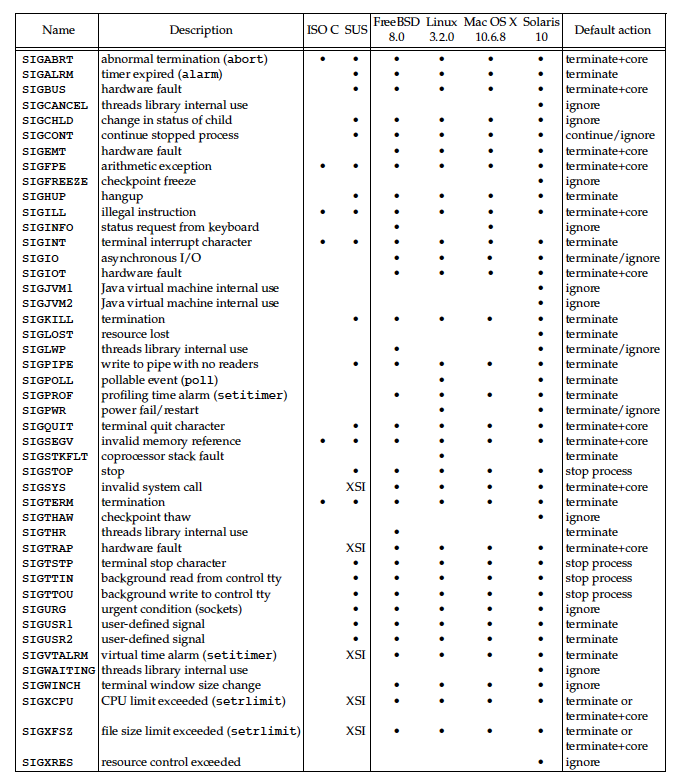

Sending a specific signal - in this case SIGHUP kill -HUP 1234 Killing more forcefully (sends a SIGKILL) - all do the same thing. Killing by process name *sends a SIGTERM) pkill someproc Killing by process ID (sends a SIGTERM) kill 1234 Remember that “kill” doesn’t always mean termination, as the signals can do many things.
Unix signals itimer skin#
On the command line, there are as many ways to send signals to Unix processes as there are ways to skin a cat (actually more). The same type of data for a watchdog process looks very different. The SigIgn (signal ignore) settings from the example above show that only four signals - 3 (SIGQUIT) and 20-22 (SIGWINCH, SIGURG, and SIGPOLL) are set to be ignored, while the SigBlk (signal block) settings block only the SIGPIPE $ echo 380004 | xxd -r -p | xxd -b

To ensure that the default action for a signal is taken, you would do something like this instead: signal(SIGSEGV, SIG_DFL) For example, if you wanted to tell the kernel that ctrl-C's are to be ignored, you would include something like this in your source code: signal(SIGINT, SIG_IGN) The SIGKILL (9) and SIGSTOP (#) signals cannot be ignored or caught. +- 31 SIGXFSZ (file size exceeded)Ĭatching a signal requires that a signal handling function exists in the process to handle a given signal. | | || +- 24 SIGTSTP (stop - can be ignored) | | || | | ||||+- 11 SIGSEGV (segmentation violation) | | || | | |||||| +- 8 SIGFPE (floating point exception) This binary interpretation of the value allows you to pick out the individual signals, especially if you’re reasonably comfortable with binary numbers. Looking at just the signals caught, the first thing we need to do is convert the hexadecimal reported value to binary.


 0 kommentar(er)
0 kommentar(er)
